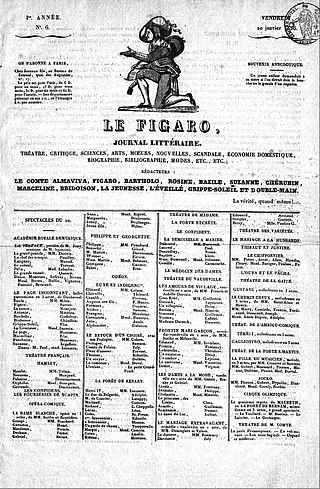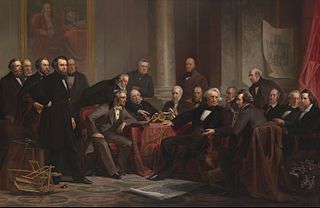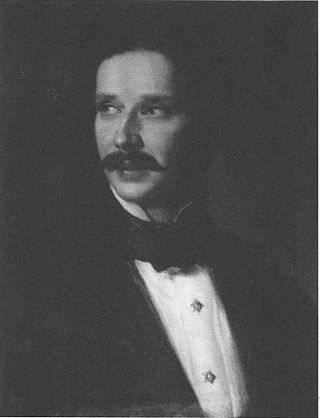Deaths
| | This section is empty. You can help by adding to it. (July 2010) |
| Years in rail transport |
| Timeline of railway history |
This article lists events related to rail transport that occurred in 1800.
| | This section is empty. You can help by adding to it. (July 2010) |

1826 (MDCCCXXVI) was a common year starting on Sunday of the Gregorian calendar and a common year starting on Friday of the Julian calendar, the 1826th year of the Common Era (CE) and Anno Domini (AD) designations, the 826th year of the 2nd millennium, the 26th year of the 19th century, and the 7th year of the 1820s decade. As of the start of 1826, the Gregorian calendar was 12 days ahead of the Julian calendar, which remained in localized use until 1923.
1863 (MDCCCLXIII) was a common year starting on Thursday of the Gregorian calendar and a common year starting on Tuesday of the Julian calendar, the 1863rd year of the Common Era (CE) and Anno Domini (AD) designations, the 863rd year of the 2nd millennium, the 63rd year of the 19th century, and the 4th year of the 1860s decade. As of the start of 1863, the Gregorian calendar was 12 days ahead of the Julian calendar, which remained in localized use until 1923.

1844 (MDCCCXLIV) was a leap year starting on Monday of the Gregorian calendar and a leap year starting on Saturday of the Julian calendar, the 1844th year of the Common Era (CE) and Anno Domini (AD) designations, the 844th year of the 2nd millennium, the 44th year of the 19th century, and the 5th year of the 1840s decade. As of the start of 1844, the Gregorian calendar was 12 days ahead of the Julian calendar, which remained in localized use until 1923.

1800 (MDCCC) was an exceptional common year starting on Wednesday of the Gregorian calendar and a leap year starting on Sunday of the Julian calendar, the 1800th year of the Common Era (CE) and Anno Domini (AD) designations, the 800th year of the 2nd millennium, the 100th and last year of the 18th century, and the 1st year of the 1800s decade. As of the start of 1800, the Gregorian calendar was 11 days ahead of the Julian calendar, which remained in localized use until 1923.
1853 (MDCCCLIII) was a common year starting on Saturday of the Gregorian calendar and a common year starting on Thursday of the Julian calendar, the 1853rd year of the Common Era (CE) and Anno Domini (AD) designations, the 853rd year of the 2nd millennium, the 53rd year of the 19th century, and the 4th year of the 1850s decade. As of the start of 1853, the Gregorian calendar was 12 days ahead of the Julian calendar, which remained in localized use until 1923.

1773 (MDCCLXXIII) was a common year starting on Friday of the Gregorian calendar and a common year starting on Tuesday of the Julian calendar, the 1773rd year of the Common Era (CE) and Anno Domini (AD) designations, the 773rd year of the 2nd millennium, the 73rd year of the 18th century, and the 4th year of the 1770s decade. As of the start of 1773, the Gregorian calendar was 11 days ahead of the Julian calendar, which remained in localized use until 1923.

1714 (MDCCXIV) was a common year starting on Monday of the Gregorian calendar and a common year starting on Friday of the Julian calendar, the 1714th year of the Common Era (CE) and Anno Domini (AD) designations, the 714th year of the 2nd millennium, the 14th year of the 18th century, and the 5th year of the 1710s decade. As of the start of 1714, the Gregorian calendar was 11 days ahead of the Julian calendar, which remained in localized use until 1923.
The Eastern Counties Railway (ECR) was an English railway company incorporated in 1836 intended to link London with Ipswich via Colchester, and then extend to Norwich and Yarmouth.

The Erie Lackawanna Railway, known as the Erie Lackawanna Railroad until 1968, was formed from the 1960 merger of the Erie Railroad and the Delaware, Lackawanna & Western Railroad. The official motto of the line was "The Friendly Service Route".
King George may refer to:

George Hudson was an English railway financier and politician who, because he controlled a significant part of the railway network in the 1840s, became known as "The Railway King"—a title conferred on him by Sydney Smith in 1844.
Events from the year 1800 in Great Britain.
Howsham is a village and civil parish in North Yorkshire, England. It is home to a small parish church and Howsham Hall. Howsham appeared as Husun in the Domesday Book.
This article lists events relating to rail transport that occurred during the 1790s.

Michal Hieronim Leszczyc-Suminski was a Polish botanist, painter and art collector. He was an alumnus of Humboldt University of Berlin.

Flemings Mayfair is a boutique hotel located in Mayfair, London.
Events from the year 1800 in Scotland.
John Hodgson was an English stage actor of the late seventeenth century. He joined the United Company in 1688 and his first recorded appearance was in The Treacherous Brothers at Drury Lane in 1690. In 1695 he was one of several actors who broke away to join Thomas Betterton's new company at Lincoln's Inn Fields. His name is sometimes written as Hudson. He was married to the singer Mary Hodgson.